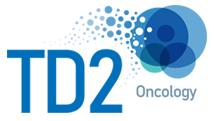Sometimes, the U.S. FDA is criticized as incapable in comparison with its European counterpart, the EMEA. Particularly this criticism is commonly found in the field of oncology, where highly sick patients have little options for treatment. But now, the FDA is getting their hands on essential therapeutic medications faster than their European counterpart.
The latest study shows that 23 cancer drugs were approved in both the Europe and U.S. The U.S. was the first to do this oncology drug approval.
Laws and Regulations of Oncology Drugs
The objective of the FDA is to safeguard the pocketbook, safety and health of the consumers. The basic food and drug law of the U.S. is the Federal Food, Drug and Cosmetic Act. With a lot of amendments, this is the most expansive law of its type on the globe.
This law is applied for assuring consumers that foods are safe for eating, pure and wholesome and made under healthy and sanitary processes. It also ensures that devices and drugs are secure, effective and safe for their applied uses. The FDA also ensures that food and drug packaging and labeling is informative, truthful and not deceptive. It also assures cosmetics are safe and made from proper materials.
Timeline From Oncology Drug Development to Approval
In the U.S., the FDA’s Center for Drug Evaluation and Research (CDER) is the prime consumer watchdog. Its main task is to evaluate new drugs prior to allowing them to be sold. This evaluation stops deceitfulness on the part of the drug manufacturer, and also offers patients and doctors the data they require for using the medicines properly. CDER makes sure these drugs work as intended and don’t carry any unknown health risks.
In the U.S., the drug agencies first test the drugs before selling them. Even the team of CDER chemists, doctors and pharmacologists evaluate the information and packaging of the product. If they find everything perfect with health advantages, the drug is approved for sale. The same oncology drug approval process goes to the sponsors, also.


